Hebrew: שְאוֺל (Sheol), אֲבַדּוֺן (Abaddon)
English: the grave, destruction
by Mark D. Taylor, NLT Bible Translation Committee
The New Living Translation is careful to translate the meaning of the original language (Hebrew, Greek, or Aramaic) texts rather than simply providing a word-for-word, literal rendering of those texts. This allows the reader to read the text and understand its meaning with minimal confusion. For example, the Hebrew text uses the words Sheol and Abaddon in numerous passages, but how many readers know what those terms mean?
Sheol
Sheol (pronounced sheh-OLE) is the Hebrew term for the place of the dead. It is used 66 times in the Hebrew text of the Old Testament. Since it is not a term that we use in English, the NLT does not use the transliterated word Sheol. Typically, the NLT translates the term as “the grave” or “the underworld” or “the place of the dead.” Here are a few examples:
Job 17:13
What if I go to the grave*
and make my bed in darkness?
17:13 Hebrew to Sheol; also in 17:16.
Job 26:6
The underworld* is naked in God’s presence.
The place of destruction* is uncovered.
26:6 Hebrew Sheol
26:6b Hebrew Abaddon.
Isaiah 38:10
I said, “In the prime of my life,
must I now enter the place of the dead?*
Am I to be robbed of the rest of my years?”
38:10 Hebrew enter the gates of Sheol?
But note that the NLT translators have provided a footnote in each of these verses to show that the Hebrew term is Sheol. This is especially helpful for readers who find that other translations use the term Sheol.
Interestingly, the King James Version (KJV), which is often quite literal in its translation methodology, does not use the transliteration Sheol in any of the passages where that term is used in the Hebrew text. Neither does the New International Version (NIV). But the English Standard Version (ESV), the New American Standard Bible (NASB), and the New Revised Standard Version (NRSV) all render it as Sheol in each instance.
Abaddon
In Job 26:6 (cited above) we also find the term Abaddon (pronounced ah-bah-DOHN), which is used five times in the Old Testament, always in poetic literature. This term refers to destruction or a place of ruin. The NLT renders it here as “the place of destruction”:
The underworld* is naked in God’s presence.
The place of destruction* is uncovered.
26:6a Hebrew Sheol.
26:6b Hebrew Abaddon.
In a few passages, Abaddon is personified, alongside Death:
Job 28:22
Destruction* and Death say,
‘We’ve heard only rumors of where wisdom can be found.’
28:22 Hebrew Abaddon.
Proverbs 15:11
Even Death and Destruction* hold no secrets from the Lord.
How much more does he know the human heart!
15:11 Hebrew Sheol and Abaddon.
Proverbs 27:20
Just as Death and Destruction* are never satisfied,
so human desire is never satisfied.
27:20 Hebrew Sheol and Abaddon.
Notice that in the latter two passages, Sheol and Abaddon appear together. And once again, the NLT translators have provided a footnote in each of these passages to show a literal rendering of the terms.
As with Sheol, the KJV and the NIV, like the NLT, do not use the transliterated term Abaddon, while the ESV, NASB, and NRSV do use that term.
Abaddon is also used once in the New Testament, in Revelation 9:11:
Their king is the angel from the bottomless pit; his name in Hebrew is Abaddon, and in Greek, Apollyon—the Destroyer.
The Greek term here (Ἀβαδδών) is simply a transliteration of the Hebrew word. Abaddon, already personified in the Old Testament (see above), is here the name of a demonic angel from the bottomless pit. To help the reader, the NLT includes a definition of the terms Abaddon and Apollyon. Both words in this context mean “the Destroyer.” The NIV similarly includes a parenthetical explanation that these terms mean “Destroyer.”
By translating the meaning of these terms, rather than simply transliterating the terms, the NLT allows readers to avoid confusion regarding unfamiliar terms. And by including the terms in a footnote, interested readers can see the terms behind the translation.
As we read these texts, may we remember that we have an enemy who wants to destroy us. And may we trust in Jesus, who has conquered death and the grave (see 1 Corinthians 15:54-57).

An edifying and helpful article! Thanks.
Thank you for a very clear explanation!!!
We just read Jonah, and I have this picture of Sheol being opposite samiyam (heavens)—not just the “underworld” which I believe is more Greek; but a dark, unseeable, suffocating, and unlivable environment. Think of our innate fear of being buried alive—it doesn’t matter if it’s in the ground, or under dark water: the fear is the same. It is a place where life does not happen—unlike the heavens.
Thank you for the explanation and clarity of these words. Looking forward to more of these insights and other issues relative to understanding the ancient and modern culture and literature of the Bible.
God bless you.
Thank you so much for bringing clarity to key words of scripture. The original words seem to be much richer in meaning validating the original inspired Word of GOD.
Thanks for the definitions of the words that are unfamiliar to us.